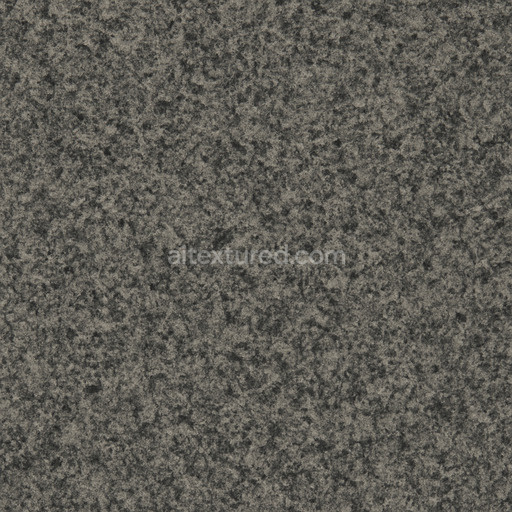The Matte Granite Texture Seamless high resolution up to 8k offers an exceptional stone surface ideal for realistic material creation in 3D projects. This texture captures the natural composition of granite, a durable igneous rock primarily composed of interlocking mineral crystals such as quartz, feldspar, and mica. The matte finish emphasizes a low-gloss, subtly rough surface that reflects minimal light, replicating weathered granite’s natural, unpolished state. The microstructure details are finely rendered, showing grain orientation and porosity typical of granite, while the absence of visible seams ensures a clean, repeatable pattern that scales elegantly across large surfaces without disruption. This stone texture is designed with a balanced distribution of mineral aggregates bound together by natural crystalline bonds, resulting in a visually consistent and structurally believable material perfect for architectural visualization and environment art.
In PBR workflows, the BaseColor (Albedo) channel displays the characteristic muted gray and earth-toned pigments of granite, enhanced by subtle oxide layers that mimic natural color variations. The Normal map encodes the fine-grained surface relief, highlighting microscopic fissures and roughness without harsh edges, which contributes to the tactile depth of the material. Roughness maps are carefully calibrated to maintain the matte quality, avoiding any glossy reflections while preserving natural specular highlights. The Metallic channel remains minimal or absent, reflecting granite’s non-metallic nature, while Ambient Occlusion adds realistic shadowing around grain boundaries and micro-crevices, enhancing dimensionality. The Height or Displacement maps capture the tactile unevenness of the stone’s surface, useful for parallax or tessellation effects to further enhance realism.
This tileable matte granite texture is optimized at resolutions up to 8k, ensuring crisp detail even on very large surfaces, and is fully compatible with major 3D engines including Blender, Unreal Engine, and Unity, allowing seamless integration with minimal setup. The AI-driven pipeline used to generate this texture prioritizes both micro-detail fidelity and structural consistency, making it production-ready for concept prototyping and final visualizations alike. For best results, it’s recommended to adjust the UV scale according to project requirements to avoid visible repetition and to combine with a subtle ambient occlusion pass and a lightly tuned normal map to enhance surface breakup without oversharpening, preserving the natural matte quality of granite while adding visual depth.
The seamless matte granite texture in high resolution up to 8k offers a tileable, AI-generated stone texture with a realistic matte granite texture seamless high resolution up to 8k appearance, enhanced by a detailed 3D preview for accurate PBR material visualization.
How to Use These Seamless PBR Textures in Blender
This guide shows how to connect a full PBR texture set to Principled BSDF in Blender (Cycles or Eevee). Works with any of our seamless textures free download, including PBR PNG materials for Blender / Unreal / Unity.
What’s inside the download
*_albedo.png — Base Color (sRGB)*_normal.png — Normal map (Non-Color)*_roughness.png — Roughness (Non-Color)*_metallic.png — Metallic (Non-Color)*_ao.png — Ambient Occlusion (Non-Color)*_height.png — Height / Displacement (Non-Color)*_ORM.png — Packed map (R=AO, G=Roughness, B=Metallic, Non-Color)

Quick start (Node Wrangler, 30 seconds)
- Enable the addon: Edit → Preferences → Add-ons → Node Wrangler.
- Create a material and select the Principled BSDF node.
- Press Ctrl + Shift + T and select the maps
albedo, normal, roughness, metallic (skip height and ORM for now) → Open.
The addon wires Base Color, Normal (with a Normal Map node), Roughness, and Metallic automatically.
- Add AO and Height using the “Manual wiring” steps below (5 and 6).
Manual wiring (full control)
- Create a material (Material Properties → New) and open the Shader Editor.
- Add an Image Texture node for each map. Set Color Space:
- Albedo → sRGB
- AO, Roughness, Metallic, Normal, Height, ORM → Non-Color
- Connect to Principled BSDF:
albedo → Base Colorroughness → Roughnessmetallic → Metallic (for wood this often stays near 0)normal → Normal Map node (Type: Tangent Space) → Normal of Principled.
If details look “inverted”, enable Invert Y on the Normal Map node.
- Ambient Occlusion (AO):
- Add a MixRGB (or Mix Color) node in mode Multiply.
- Input A =
albedo, Input B = ao, Factor = 1.0.
- Output of Mix → Base Color of Principled (replaces the direct albedo connection).
- Height / Displacement:
Cycles — true displacement
- Material Properties → Settings → Displacement: Displacement and Bump.
- Add a Displacement node: connect
height → Height, set Midlevel = 0.5, Scale = 0.02–0.08 (tune to taste).
- Output of Displacement → Material Output → Displacement.
- Add geometry density (e.g., Subdivision Surface) so displacement has polygons to work with.
Eevee (or lightweight Cycles) — bump only
- Add a Bump node:
height → Height.
- Set Strength = 0.2–0.5, Distance = 0.05–0.1, and connect Normal output to Principled’s Normal.
Using the packed ORM texture (optional)
Instead of separate AO/Roughness/Metallic maps you can use the single *_ORM.png:
- Add one Image Texture (Non-Color) → Separate RGB (or Separate Color).
- R (red) → AO (use it in the Multiply node with albedo as above).
- G (green) → Roughness of Principled.
- B (blue) → Metallic of Principled.
UVs & seamless tiling
- These textures are seamless. If your mesh has no UVs, go to UV Editing → Smart UV Project.
- For scale/repeat, add Texture Coordinate (UV) → Mapping and plug it into all texture nodes.
Increase Mapping → Scale (e.g., 2/2/2) to tile more densely.
Recommended starter values
- Normal Map Strength: 0.5–1.0
- Bump Strength: ~0.3
- Displacement Scale (Cycles): ~0.03
Common pitfalls
- Wrong Color Space (normals/roughness/etc. must be Non-Color).
- “Inverted” details → enable Invert Y on the Normal Map node.
- Over-strong relief → lower Displacement Scale or Bump Strength.
Example: Download Wood Textures and instantly apply parquet or rustic planks inside Blender for architectural visualization.
To add the downloaded texture, go to Add — Texture — Image Texture.

Add a node and click the Open button.

Select the required texture on your hard drive and connect Color to Base Color.


